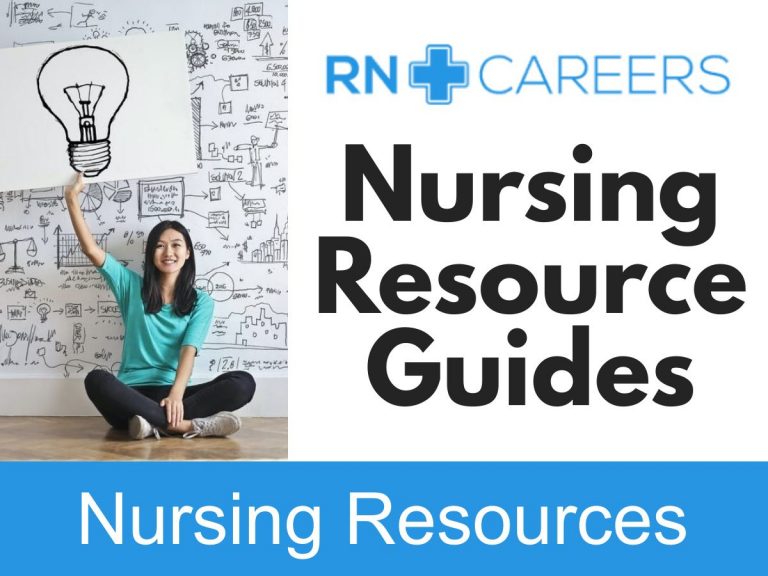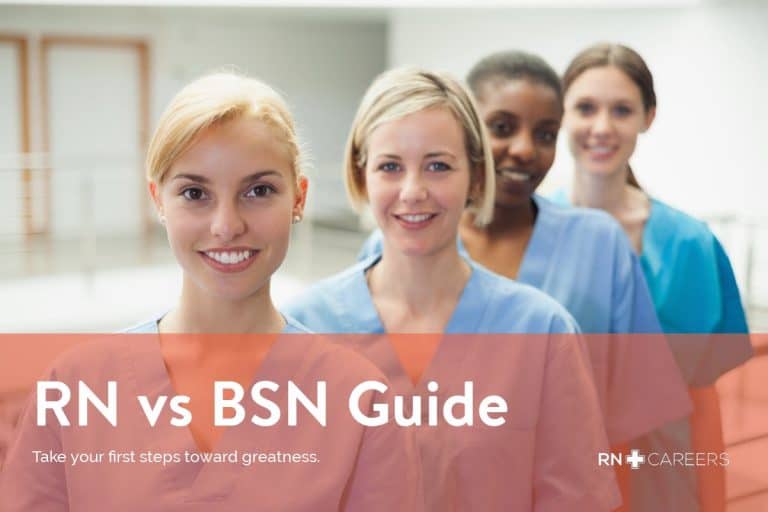Nurses are the backbone of the healthcare system; the pieces that transform hospital wards into well-oiled machines. There’s a saying that goes: “behind every successful man there is a strong woman’. Similarly, one could argue that behind every successful physician is a strong and capable team of nurses. They administer medications, assess and monitor patients, maintain intravenous lines, communicate and liaise with doctors, maintain records, intervene in critical situations, and the list goes on. Essentially, they are the bedside caregiver.
Online Nursing Programs That Might Interest You
Learn about start dates, transferring credits, availability of financial aid, and more by contacting the universities below.
Nurses are also required to study the dreaded subject of anatomy. In this article, we’ll explain why, and how to make learning a lot easier with the help of some clever tactics. Let’s dive in!

Why is it Important for Nurses to Understand Anatomy?
Anatomy and physiology form the framework of a nurse’s daily tasks. Let’s take a look at a few examples:
- Patient assessments – procedures like head-to-toe assessment need a thorough understanding of anatomy. As a nurse, you need to understand what organ you are palpating in the abdomen, which lobe of the lung or heart valve you’re listening to and what might be the source of pain.
- Nursing skills – setting proper intravenous lines requires knowledge about the superficial veins of the upper limb. Similarly, introducing a catheter in a patient’s bladder demands top-notch pelvis anatomy. How can you obtain those without a solid knowledge of anatomy?
- Diseases and treatments – what is the meaning of ventricular hypertrophy, a syncope or a systolic murmur? How are they related? What are the possible outcomes of an acute kidney injury? How do the antihypertensive medications that you administered today work? Physiology is only part of the answer, the other being anatomy.
- Communication and documentation – a ‘fracture of the tibial shaft’ sounds much more professional than a ‘broken bone in the leg’. Similarly, an ‘epigastric pain’ is instantly appreciated by other healthcare professionals compared to ‘abdominal pain’. You get the idea. Anatomy knowledge facilitates communication between nurses and physicians, as well as documentation.
As you can see, nurses must consistently think on their feet and understand the underlying theory of their maneuvers, actions, and decisions.
An Easy Guide to Learning Anatomy
Now you understand the reasons for learning anatomy – but how can you start doing it effectively? After all, it is a dreaded, difficult, boring, and repetitive subject for many students. Many students are also in nursing school – take a look at pre-nursing student Erin’s success story to see how we helped her get a 4.0 in her anatomy exam!
Now, returning to the question of “how to study effectively?”; the answer is by following a simple, tried-and-tested Kenhub recipe:
- Teaching
- Having a plan
- Utilizing evidence based learning strategies
- Maximizing the use of your textbook
- Spaced repetition
Let’s look at each ingredient one at a time.
1) Teaching
As a nurse always on the move, learning anatomy can feel daunting or even impossible. Taking care of tens of patients each shift is definitely no easy feat. Nursing students face an equally challenging mission of balancing sleep, academics, and social life. On top of that, studies have shown that students forget up to 46.5% of neuroanatomy in particular anywhere between one semester and one year after its completion. Constantly re-learning an oftentimes mind-numbing subject like anatomy is something you definitely need to avoid (reviewing is a different matter, but we’ll get to that later). Therefore, you need to learn smartly. But how? By teaching it!
Time is of the essence, so test the water first by starting with something lightweight. You can form study groups where you teach your classmates and friends. If you find it helpful and enjoyable, you can take it one step further and offer some tuitions to younger or confused anatomy students. You might even utilise the power of the web by starting an anatomy blog or video library where you explain anatomy topics in simple terms. Check out the Youtube channel of Armando Hasudungan for inspiration.
Why is teaching a great way to learn anatomy?
- It forces you to really understand the topics. Teaching someone effectively is impossible if you are confused about the subject yourself. Reciting anatomy books won’t help. You need to simplify and distill the concepts, use analogies, metaphors, and so on.
- Teaching uses the two golden techniques of the 21st century regarding learning and studying – tests and active recall. When you explain something, you are in fact testing yourself on how well you know the subject while simultaneously straining your brain to recall it. According to science, those two blow re-reading, highlighting and note-taking out of the water – so do them often!
2) Having a Plan
A million nursing courses, difficult exams, anatomy, clinic hours, social life, and sleep sound like too many things to handle even for the best of us. However, with a military-style schedule, it is definitely possible to study efficiently without becoming a walking zombie. A plan helps you anticipate upcoming exams and prevent procrastination, the deadly nemesis of anatomy learning. It also helps you divide your work over a longer period of time. Let’s be honest, you cannot learn the entire anatomy of the thorax in a single night and expect to be able to retain the information long-term.
What does an effective plan look like? First things first, start studying from the very first day of term. It is a killjoy, but an essential aspect to survive your anatomy course. Start by examining your syllabus and identify the most important topics. Then break the material down into smaller, more manageable sub-topics that you can chip away at every single day. That’s right, you need to study anatomy every-single-day. When creating your study plan, don’t forget to schedule in the time you spend on non-negotiable daily tasks, like eating, sleeping, hobbies and social events. Nursing school is more than studying 24/7, so make the most of it!
3) Utilizing Evidence Based Learning Strategies
Don’t confuse learning strategies with voodoo incantations capable of eliminating all of your anatomy learning difficulties. They are simply efficient methods that can enhance your learning and stop you from pulling all of your hair out. Think of them as being a Swiss Army knife for anatomy learning. It’s impossible to look at all the available learning strategies in a single article, but we’ll show you one that fits anatomy like a glove. It is called a ‘memory palace’ and here’s how it works:
- Let’s say the menu for this review session includes the branches of the axillary artery. Start by listing all of them, starting with the superior thoracic.
- Think of a well known location, like your bedroom. Start walking through it in your mind’s eye and picture every object it contains in as much detail as possible.
- Transform each branch from your list into an image. For example, you can imagine the superior thoracic artery as a flying thoracic cage dressed in Superman’s costume. The more exaggerated or comical your images are, the better you’ll remember them – so go wild!
- Now associate the images with the objects in your well known location. Take the first image on your list and connect it to the first object that you came across when you imagined your location. For example, if the object was your bedroom door, you can imagine the thoracic cage dressed as Superman to be the door handle, which is flying chaotically over the door, making it difficult for you to grab.
- Rinse and repeat with the second branch and second object in your room until the end of your list.
- Keep revising by ‘travelling’ through your bedroom in your mind’s eye in the same direction that you learned the objects in, trying to recall the associated images and branches.
This is merely the tip of the iceberg when it comes to the potential of learning strategies. You have so many options to choose from, depending on your specific requirements and knowledge of the learning approaches that work best for you. Where can you start your search? Kenhub’s website has several more learning strategies that you can start incorporating into your learning – from learning holistically to using coloring books, mind maps, active recall, and everything in between.
4) Maximizing the Use of Your Textbook
Do you know that you have an excellent anatomy learning resource right under your nose? How well do you exploit your anatomy textbook? To be in that 1% of efficient nursing students that manage to master anatomy, you need to learn to skim the section or chapter and read ‘in layers’. What does that mean? Before throwing yourself forward, take a step back and preview the chapter for a few minutes only. Quickly skim over the section headings, together with the images and their legends. Then take each paragraph and read only its first and last sentences, sentences containing bold words, and ones which you think are important, for example those that let you know about the causes of certain pathologies, define clinical terms, and so on. As you go along, recite them to yourself (a.k.a testing).
Since reading ‘in layers’ is a preview, you need to go back and read every single word for a complete understanding. Many students take advantage of their highlighters at this stage. This tool isn’t the problem, but the way that most students use it definitely is. Their excessive highlighting gives the impression that the sun is rising from their pages. In the end, this only creates confusions because everything is marked as important. To avoid this problem, you need to remember to never highlight entire sentences and mark in such a way that you are stringing words together to form new sentences. Imagine that if an English teacher would look at your newly formed sentences, she would have a heart attack. If you’ve been paying particularly close attention, you might have seen that the last section of this paragraph shows you exactly how to highlight correctly. Just read the new sentences and see how easy it is!
Last, but not least, how much do you take advantage of chapter or section summaries? You probably just skip over them, right? Next time you’re reading your textbook, stop at the summaries because they are a goldmine of information. They distill the essential information and there is a very high chance that your professor will ask you about the concepts presented within them. Therefore, those pages are the perfect opportunity to create ‘fill-in-the-blank’ tests. Simply print/photocopy them, use Tipp-Ex, whiteout or corrector to remove the bolded or keywords from the sentences, photocopy the corrected sheets and you have an amazing test without any hints in it. Keep trying to fill in the blanks on a regular basis, score yourself each time, and see your grades soar.
5) Use Spaced Repetition
The secret to learning and remembering anatomy without letting the cause take over your life is to study smarter – not necessarily harder.
How? With spaced repetition, a learning and revision method rooted in the famous ‘forgetting curve’. Using this method, you only revise what needs to be revised and only when you need to, right before you are about to forget it.
An easy way to get started with spaced repetition is by using Anki. Anki is a free, online, flashcard learning tool that is the current king of spaced repetition algorithms. As long as the flashcards you create are logical and follow the KISS principle (‘Keep It Simple Stupid’), Anki will do the work for you.
Unfortunately, Anki is far from perfect because each flashcard needs to be created and filled in manually, a process which takes a long time. Given the limited time available to nursing students, it’s certainly not optimal.
An easy solution would be to use other spaced repetition learning tools, such as Kenhub’s quizzes. The questions are already prepared for you and they test your knowledge using the scientifically backed active recall method. Multiple options are available, from basic and advanced structure identification to question banks like the ones you’ll find in your exam.
We hope that this article allowed you to pick up some useful tips for tackling the subject of anatomy as a nursing student. Now all that’s left to do is work hard, and reap the rewards. Good luck!
- About the Author
- Latest Posts
RNCareers.org Staff Writers are nurse educators, nurse practitioners, RN and LPN freelancers and part time writers. They are passionate about sharing their nursing expertise and helping nurses like you. If you are in a position to help nurses with your writing, and you’d like to find out more about contributing to our site, reach out using the contact us form.





![[year] Best ADN Programs in the United States 7 2024 Best Adn Programs In The United States](https://www.rncareers.org/wp-content/uploads/2020/11/Best-ADN-Nursing-Schools-in-the-United-States.jpg)
